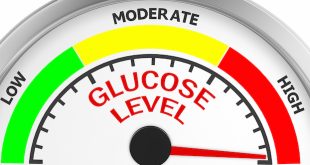If you have type 1 diabetes, you know how challenging it can be to manage blood sugar levels and exercise! Blood sugar response to exercise varies greatly between people. Even the same individual can have a different response to the same type of exercise. There is surprisingly little research in this area and certainly not enough to establish a firm set of guidelines. However, a team of experts recently used the existing literature and their experience to form a consensus statement regarding blood sugar management for people with type 1 diabetes who exercise regularly. We’ll review what they had to say about blood sugar targets before exercise, and the effects of recent low blood sugar on plans for exercise, in this article.
Blood sugar levels before exercise
There is no blood sugar range that guarantees safety and performance. The appropriate starting level depends on safety, insulin concentrations before exercise and individual preferences based on experience. The table below shows the guidelines for pre-exercise blood sugar levels.
| Blood glucose level | Action |
| Below 5 mmol/L
|
|
| 5.0 to 6.9mmol/L
|
|
| 7.0 to 10.0 mmol/L
|
|
| 10.0 to 15.0 mmol/L
|
|
| Higher than 15 mmol/L: |
|
Recent hypoglycemia
It is difficult to imagine that the low blood sugar you had yesterday can affect your risk of low blood sugar when you exercise today, but it does. Increased vigilance around monitoring blood sugar levels is especially important if hypoglycemia has occurred within 24 hours prior to exercise. Exercise should be avoided if you have had a blood sugar level of 2.8 mmol/L or lower, or had a low blood sugar requiring assistance from another person within the previous 24 hours. If you have had a recent blood sugar of 2.9 to 3.9 mmol/L, and were able to self-treat, you still need to consider the increased risk of another low blood sugar when planning to exercise.
Even if your blood sugar levels go high after an episode of hypoglycemia, there is still an increased risk of another low later on. Certain types of activities are considered potentially unsafe, and should be avoided if you have had a recent low blood sugar. These include alpine skiing, rock climbing, swimming or trekking alone).
Your blood sugar level at the start of exercise sets the stage for your performance. A low blood sugar level can ruin your session and even prevent you from getting started. A high blood sugar level will likely increase perceived exercise effort and possibly lead to dangerous ketone levels. Although it remains unclear, the optimal blood sugar level for performance might be 6.0 to 8.0 mmol/L. Frequent glucose monitoring, adjustments to both basal and meal insulin dosing, and consumption of carbohydrates during and after exercise is essential for safe and successful exercise.
A registered dietitian with diabetes and sports knowledge is the most qualified healthcare professional to help active people with type 1 diabetes. Even with more research, exercise with type 1 diabetes is an extremely challenging area to study.
Please share your experience with your diabetes team. Your knowledge helps the experts develop guidelines, especially when research in this area is lacking.
 Diabetes Care Community Learn, connect and care
Diabetes Care Community Learn, connect and care




